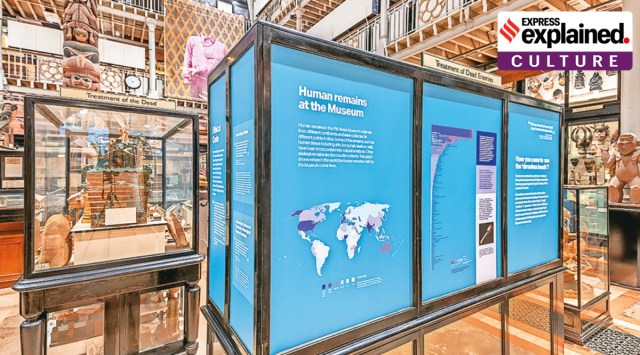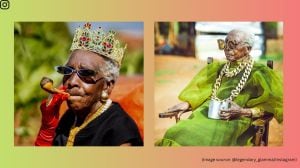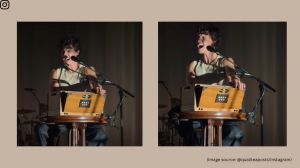Bringing home Naga ancestral human remains from a UK museum
The step is in line with a larger effort by museums around the world to “decolonise” their collections. This is the first such effort to repatriate the ancestral human remains of an indigenous community in India, possibly South Asia.
 The Pitt Rivers Museum in Oxford is home to the largest Naga collection in the world. Pitt Rivers Museum
The Pitt Rivers Museum in Oxford is home to the largest Naga collection in the world. Pitt Rivers Museum The Naga community of Northeast India has initiated an overseas repatriation effort to bring their ancestral human remains home from a museum in Britain. The step is in line with a larger effort by museums around the world to “decolonise” their collections. This is the first such effort to repatriate the ancestral human remains of an indigenous community in India, possibly South Asia.
What is the initiative?
In 2020, the Pitt Rivers Museum in Oxford, England, announced that it would take its collection of “human remains” and other “insensitive” exhibits off display, following a three-year-long “ethical review”.
Museum director Laura Van Broekhoven said these items, sourced during the expansion of the British Empire, played into stereotypical thinking about cultures elsewhere as “savage” or “primitive”.
The museum, which has a rich collection of 500,000 items from almost all periods of human existence across the world, also said that it was reaching out to communities for restitution and repatriation of these remains to their rightful homes.
Melbourne-based Naga anthropologist Dolly Kikon then reached out to Broekhoven to ask if Naga remains housed in the museum for more than 100 years could be repatriated to the Naga homeland.

The request triggered a community-led initiative for repatriation. The Forum for Naga Reconciliation (FNR) — a Nagaland-based collective which, since 2008, has been a key facilitator in the Naga peace process — is the main mover of the initiative.
 Anthropologist Dolly Kikon (right) delivering a lecture on the repatriation efforts in Nagaland. (Photo Credit: http://www.rradnagaland.org)
Anthropologist Dolly Kikon (right) delivering a lecture on the repatriation efforts in Nagaland. (Photo Credit: http://www.rradnagaland.org)
What are the Naga objects in the Pitt Rivers Museum?
The museum is home to the largest Naga collection in the world: approximately 6,500 objects, 898 of which are on display.
“The Museum is largely typologically displayed but there is a dedicated Naga display in the Upper Gallery,” Broekhoven told The Indian Express in an email.
The collection includes objects of everyday Naga life including clothing items, agricultural tools, figures, basketry, ceramics, and musical instruments — but also human remains. Most of these objects were sourced by colonial administrators James Philip Mills and John Henry Hutton in the 1800s.
What human remains are these?
Broekhoven said that the ancestral remains — including skulls, trophy heads, a part of a finger, etc. — originate from at least 13 different Naga groups. The largest number of remains (78) is attributed to the Konyak Naga, followed by Angami Naga (38) and Sumi Naga (30).
 The Pitt Rivers Museum, UK, has at least 6,500 Naga objects. (Pitt Rivers Museum)
The Pitt Rivers Museum, UK, has at least 6,500 Naga objects. (Pitt Rivers Museum)
So, has the repatriation process begun?
Yes, but it is in its initial stages. Repatriation is a long and complex process that takes years. Most successful repatriation efforts — such as those of New Zealand’s Moriori and Australia’s Tasmanian aboriginal people from the Natural History Museum, London to their native lands — have taken at least two decades.
In the Naga case, conversations are underway. In 2020, the FNR, in collaboration with Kikon and Edinburgh-based Arkotong Longkumer, another Naga anthropologist, formed a Naga research team called “Recover Restore and Decolonise” (RRaD). The RRaD team is conducting interviews, holding community-facing meetings, and generating public awareness about the initiative. This is the first step to building a case for an official claim to the University of Oxford (of which the museum is part).
And what role is the museum playing?
The Pitt Rivers Museum said it takes requests or claims for repatriation on a case-by-case basis. “When it concerns human remains we try to work closely with the descendant communities to ensure the process can develop as smoothly as possible,” it said in a statement.
In December 2022, Broekhoven visited Nagaland to meet with the stakeholders, including community elders. “A lot of people might think about the removal of certain objects or the idea of restitution as a loss, but what we are trying to show is that we aren’t losing anything but creating space for more expansive stories. That is at the heart of decolonisation,” Broekhoven said.
What does the Naga community feel about the initiative?
Longkumer, the Edinburgh-based anthropologist, said that while the repatriation process may take years to fructify, “the thread that runs through all of it is to heal, to reconcile, to take control of your own history”. Kikon said it has always been “disturbing” to see Naga objects being displayed as “exotic and primitive” in museums across the world, and this process will help Nagas in “taking control of their own narrative”.
More Explained
EXPRESS OPINION
Nov 20: Latest News
- 01
- 02
- 03
- 04
- 05










































